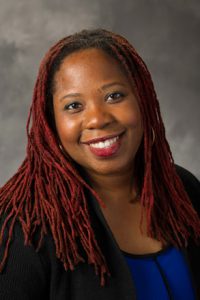Interracial Marriage and Divorce in Kansas and the Question of Instability of Mixed Marriages
Journal of Comparative Family Studies
Volume 2, Number 1 (SPRING 1971)
pages 107-120
Thomas P. Monahan, Professor of Sociology
Villanova University, Villanova, Pennsylvania
Some critical comments on studies of interracial marriage are offered, and caution is urged in using information purporting to disclose the nature of the interracial marriage phenomenon, including United States Census and Vital Statistics data. The legal history of racial intermarriage in Kansas is outlined, and its statistical data upon these events are briefly evaluated. Beginning with the year 1947, mixed race marriage and divorce statistics for White, Mexican, Negro, Indian, Chinese, Japanese, and Other races in Kansas are presented. The figures show a rather steady rise in the proportion of mixed marriages, but Negroes appear to be the least intermarried of the minority groups and account for less than one-half of mixed marriages. In the late 1960′ s about 15 per cent of all the nonwhite marriages (7 per cent for Negroes separately) were mixed. Important differences appear for the several other races. In Kansas, as in Iowa, mixed Negro marriages probably have been more stable than homogamous Negro marriages. Again, whether or not a certain type of mixed race marriage will endure would seem to depend upon the particular races intermarrying, the social circumstances surrounding them at the time, and the nature of the marital choice itself.
PREFATORY NOTE
Although broadly theoretical and interpretive articles have been written upon interracial, interethnic, and intercaste marriages (Davis, 1941;; Merton, 1941; van den Berghe, 1960), the statistical basis for such studies is rather fragmentary and selective material (Monahan, 1970a, 1970b). On the whole, even though individual countries have at times assembled such data, factual information is sparse, and none appears in the 1968 Demographic Yearbook of the United Nations. A cross-cultural comparison of the demographic concomitants of this phenomenon requires sets of carefully drawn data, analyzed first within their separate cultural contexts. As part of a larger study of the past and present situation in the United States, information about interracial marriage and divorce in the mid-American state of Kansas should add a segment to our understanding of the American pattern.
In their recent book on Marriage and Divorce (1970:129), Carter and Glick propose that the number of interracial marriages, while “extremely small,” has shown an upward trend and in the coming decades will register substantial increases. Their findings are also interpreted to support the theory that mixed marriages are relatively unstable as compared to homogamous ones (pp. 124-125). Unfortunately these hypotheses are based on 1960 Census data, about w’hich there are serious doubts as to accuracy and significance, acknowledged in part by the authors (Carter and Glick, 1970:424-426; Monahan 1970a:462). It would seem that answers to these questions on the trend and instability of interracial marriages in the United States should be derived from statistics on marriage and divorce occurrences, rather than from secondary Census information showing marital status of the population.
Reliance upon Census data is to some extent due to the lack of national statistics on marriage and divorce in depth and in detail. Also, because they are based upon a very small sample of state records, the marriage data of the National Center for Health Statistics are not very meaningful as to interracial marriage trends, as yet; and, with respect to interracial divorce, only a few states have records by race for a sufficient number of years. Indeed, race-or-color has been poorly defended as a statistical item and has been obliterated from the marriage records in some major population areas (California, Maryland, Michigan, and New York) by civil rights protagonists, thus making objective findings on interracial marriage more difficult…
Read or purchase the article here.

